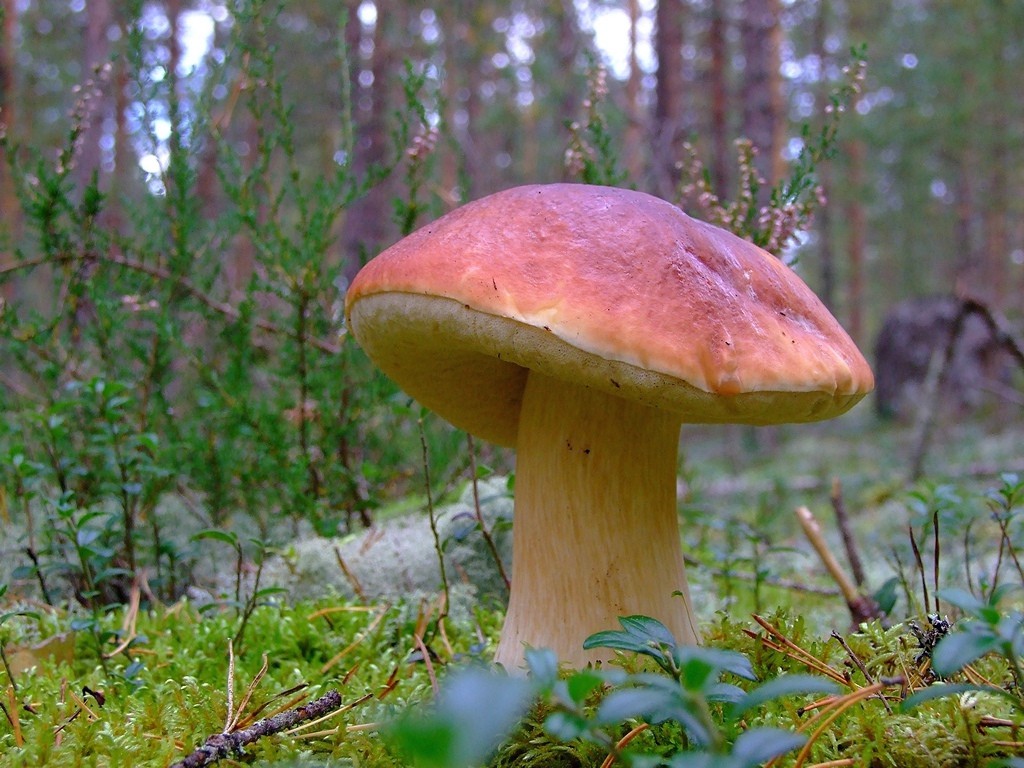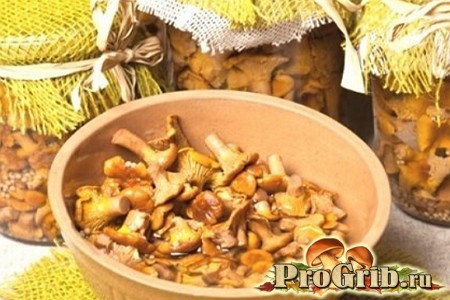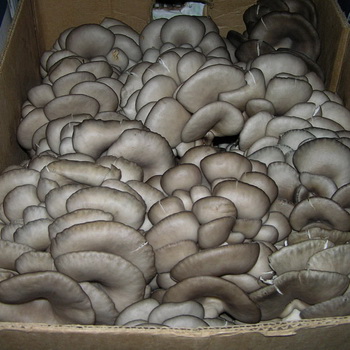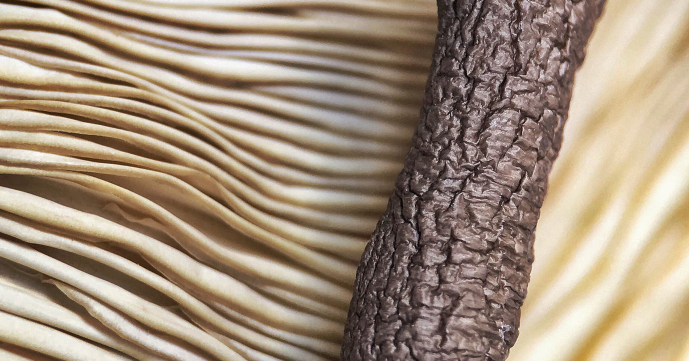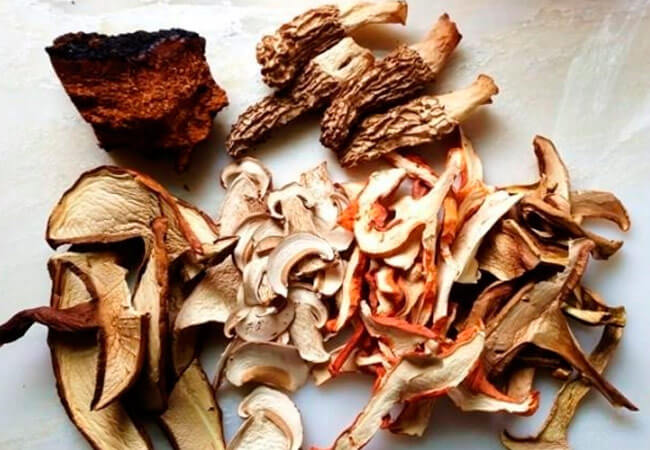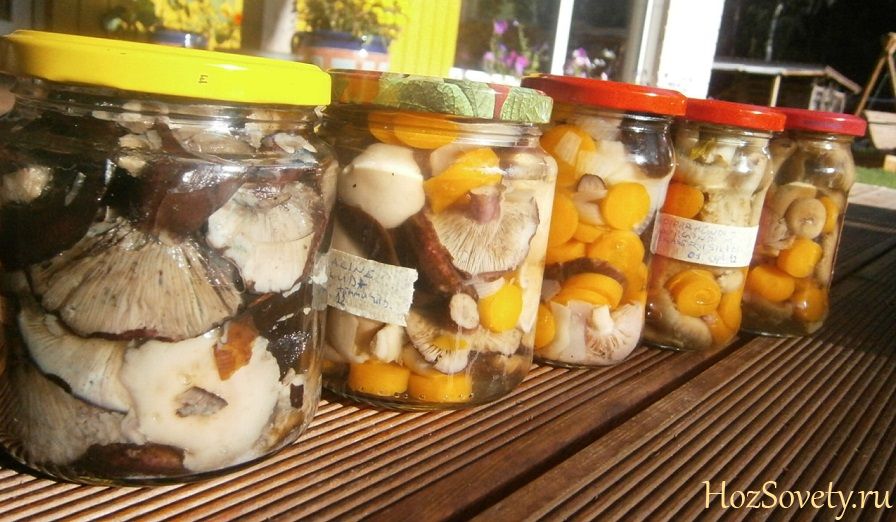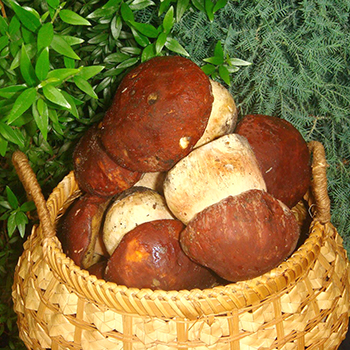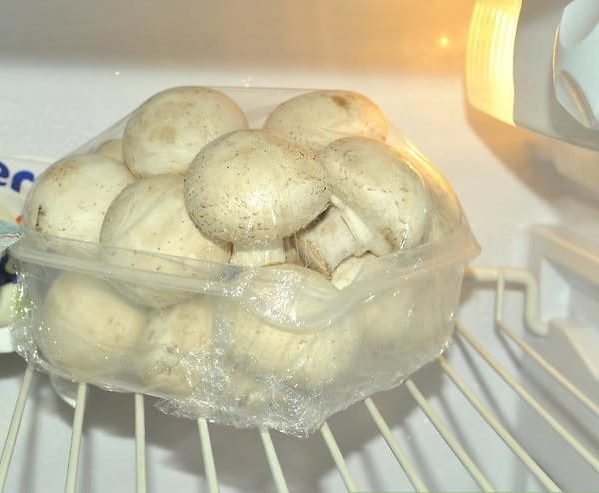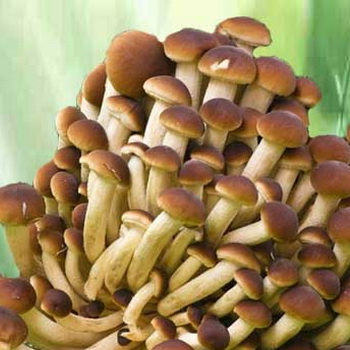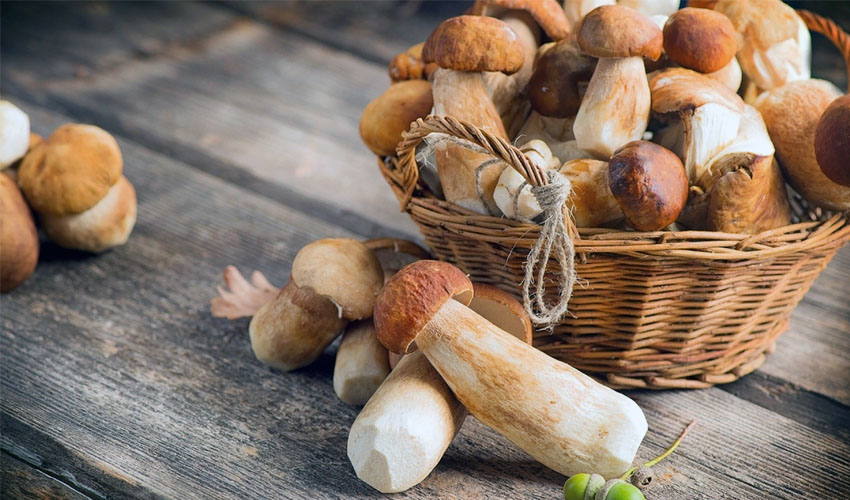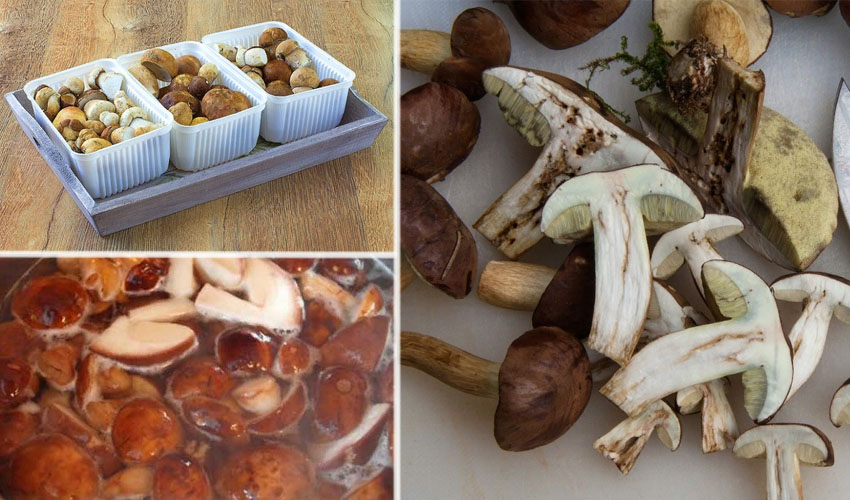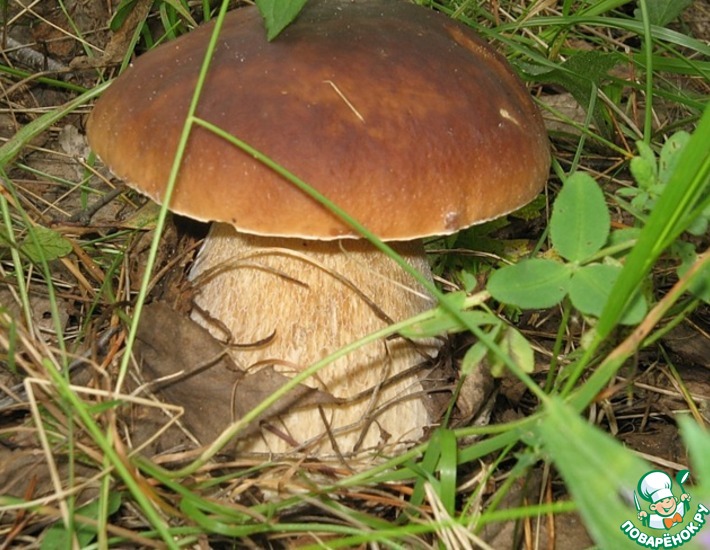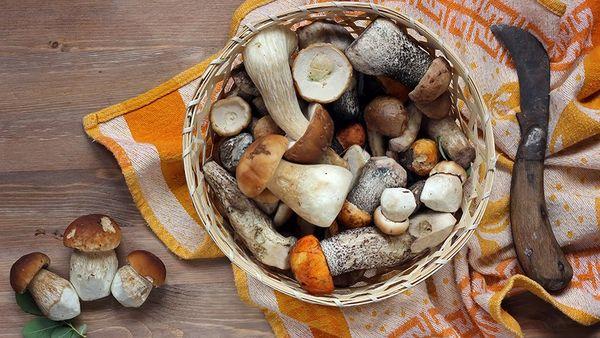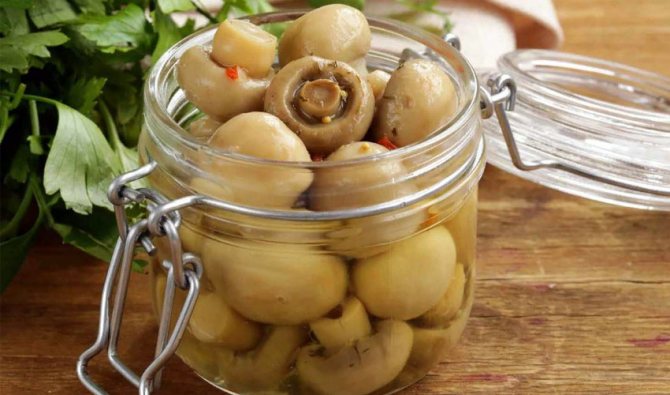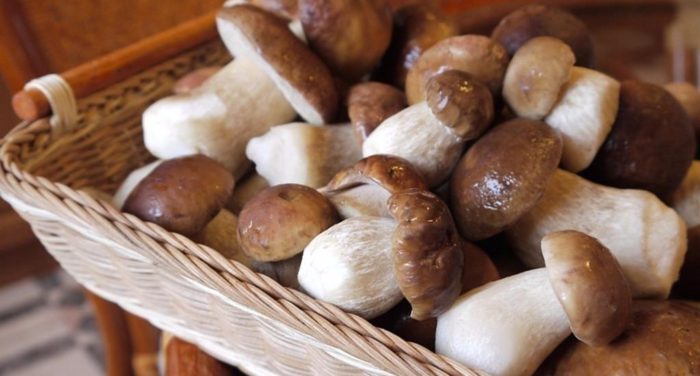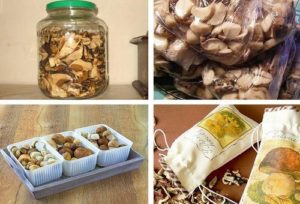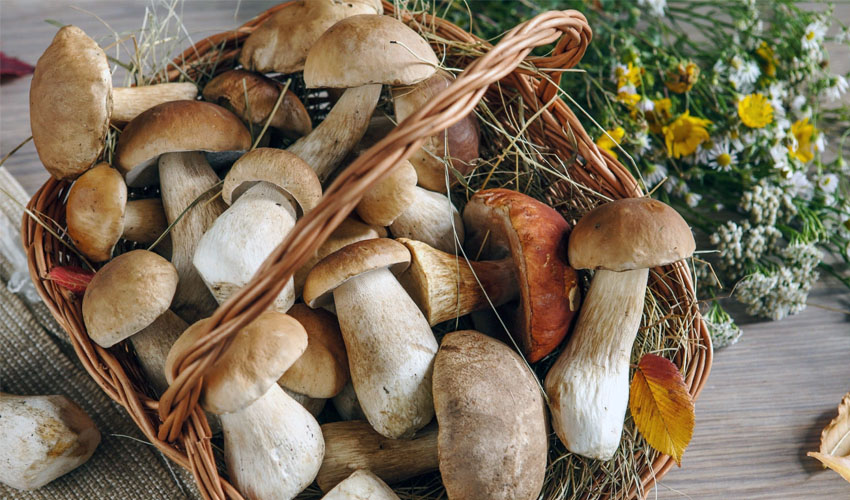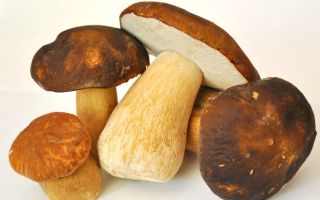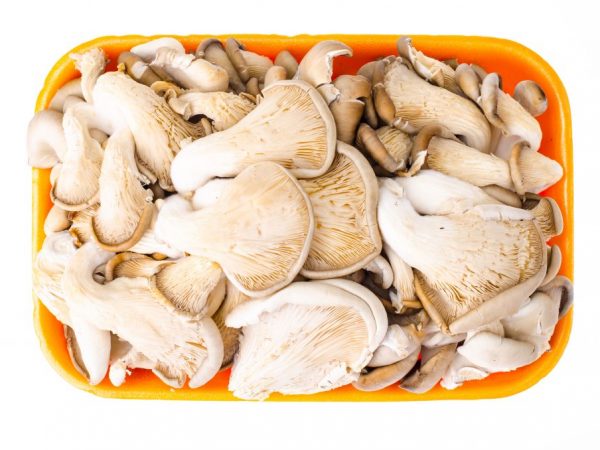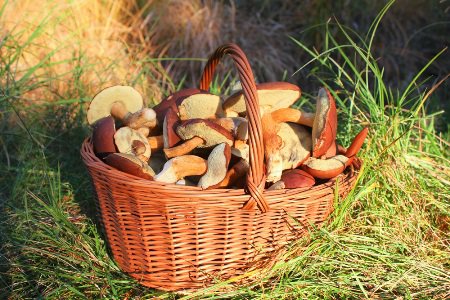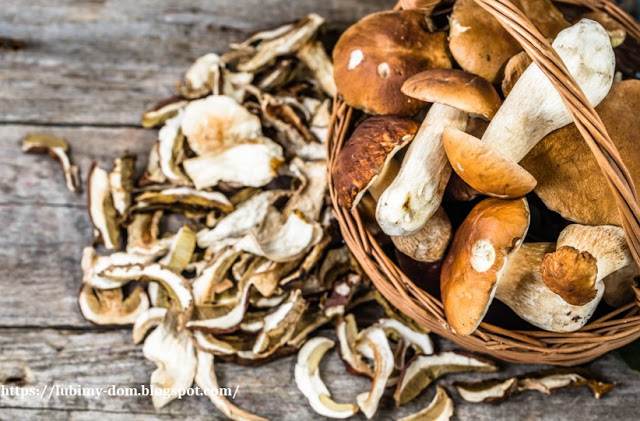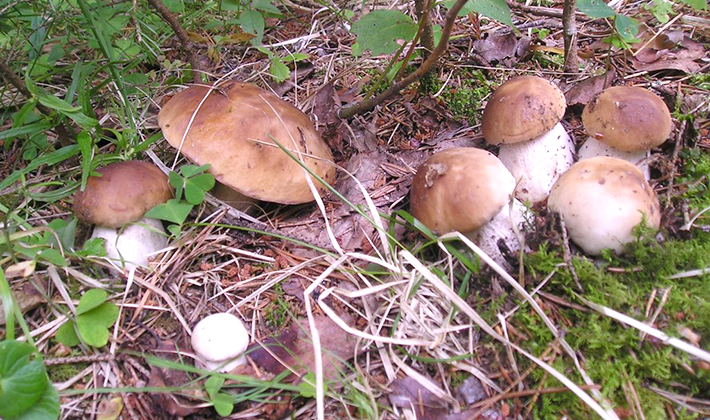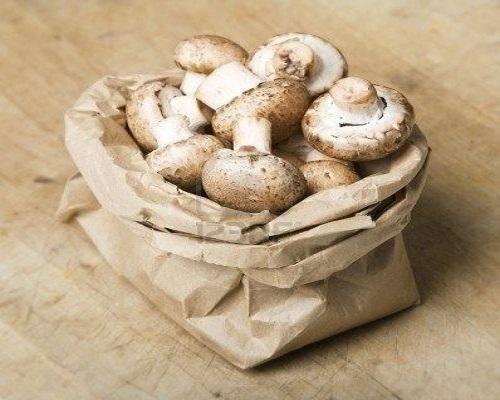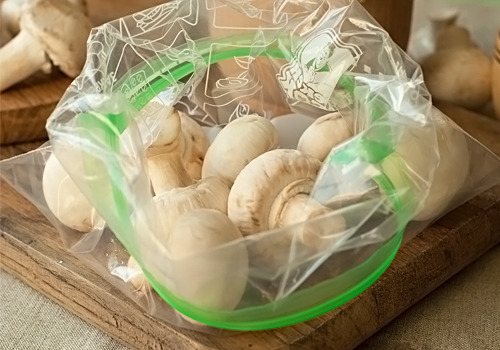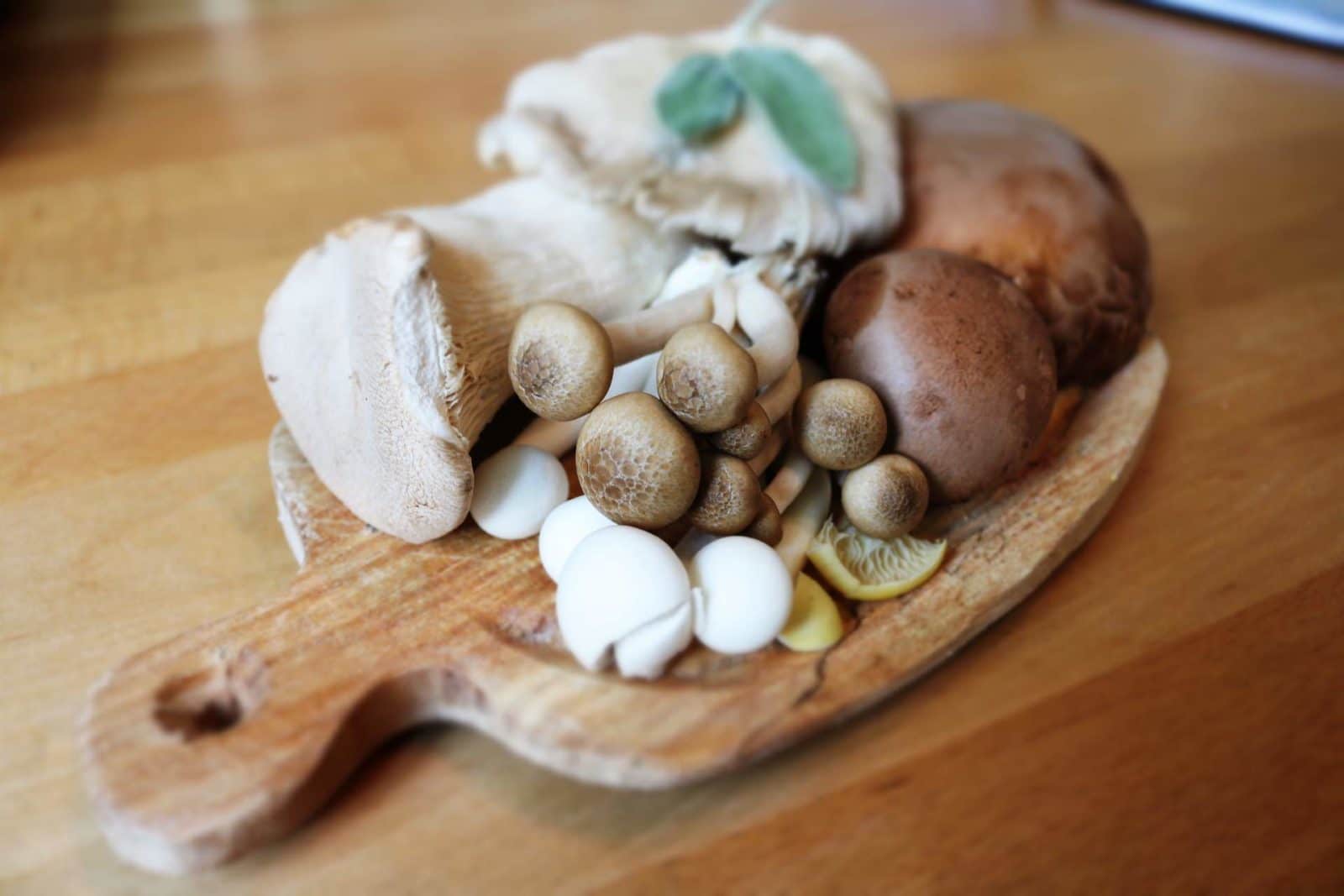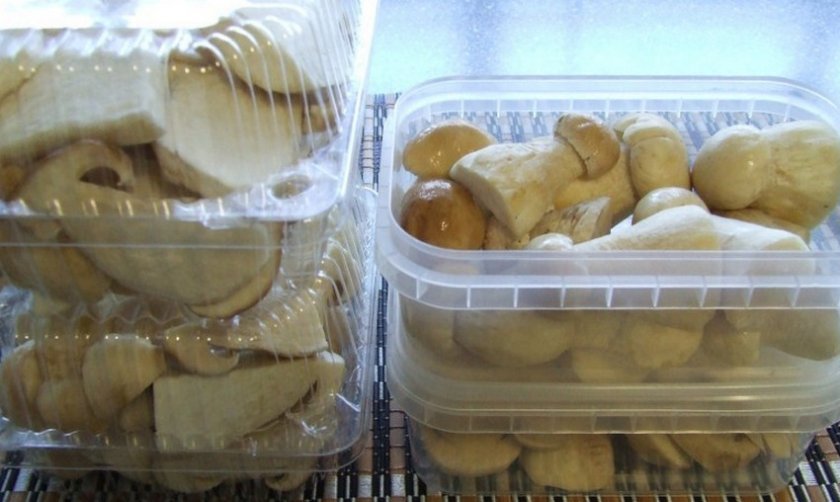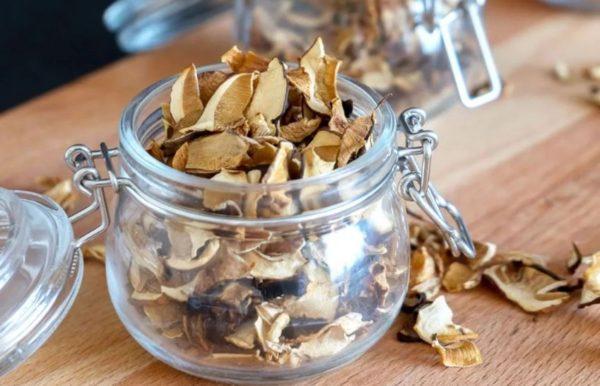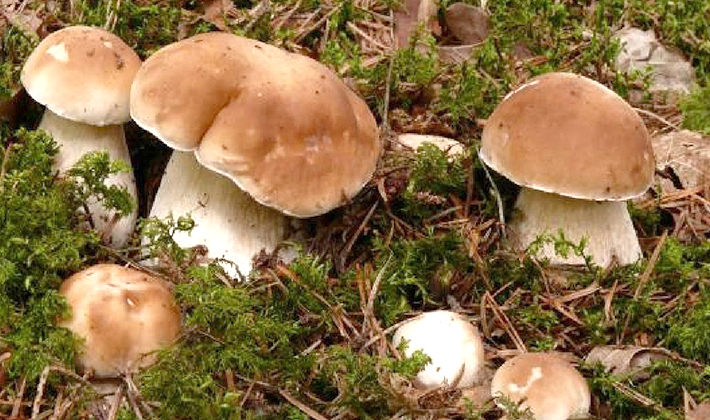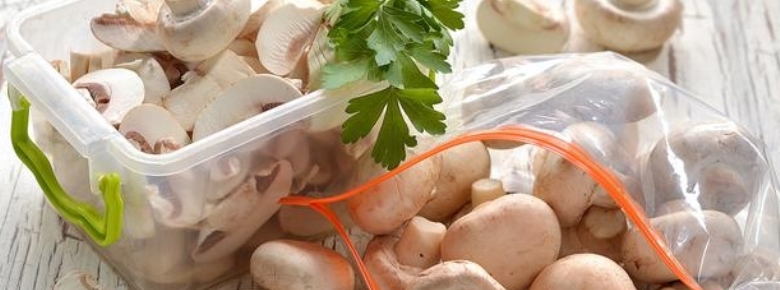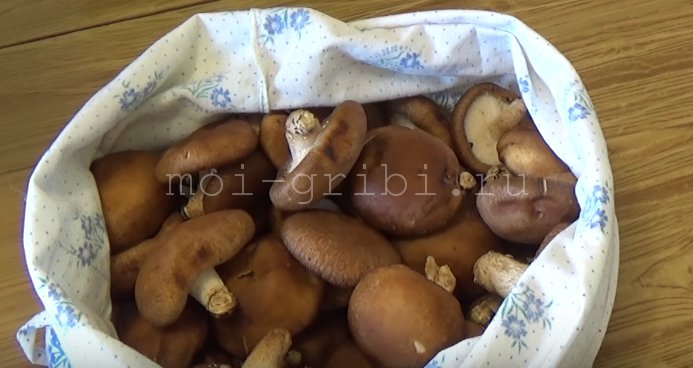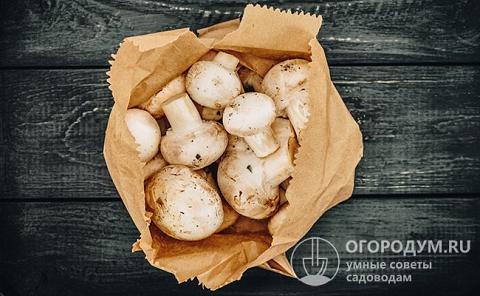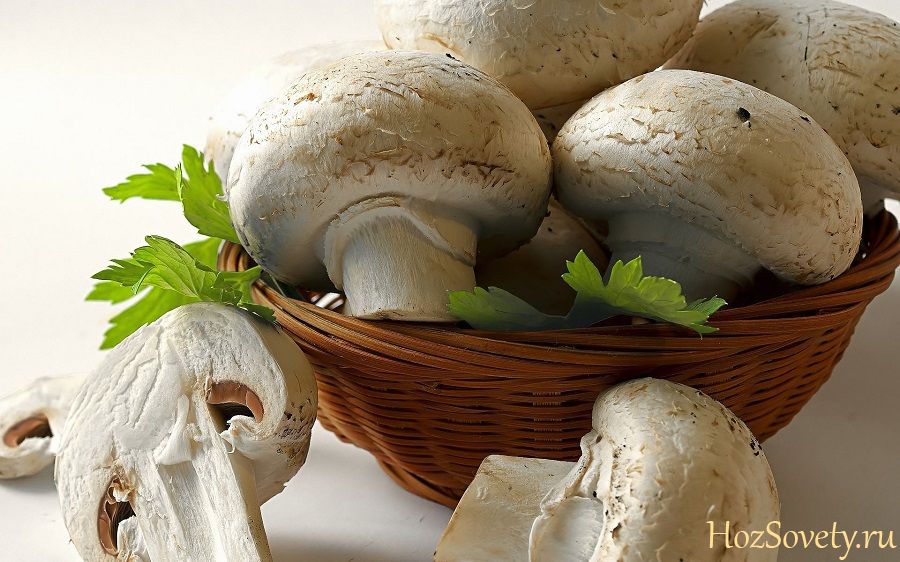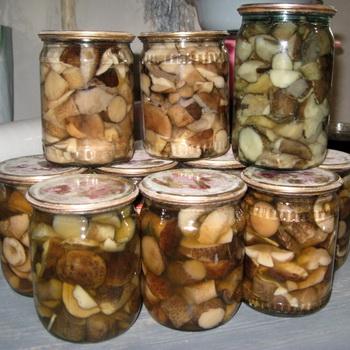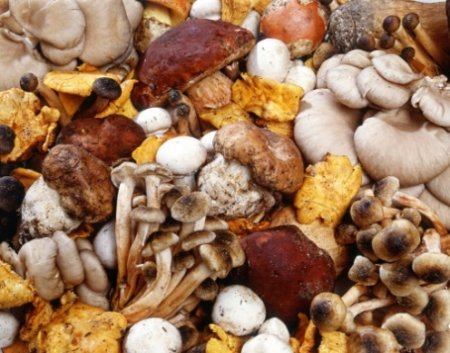Storing frozen mushrooms
One of the most effective storage methods, suitable for use both at home and on an industrial scale, is freezing, along with canning, helping to preserve the mushrooms for a long time. As in other cases, you will first need to select the most preserved mushrooms from the batch - young, not touched by pests, without visible signs of spoilage; it is also advisable that they are not too large. Before freezing, they are washed repeatedly, changing the water during each process. Then, after a short drying time, the mushrooms are placed in a refrigerator. The recommended temperature level in this case is -30 ° C, which allows you to keep the nutritive components in the fruit bodies as much as possible. After 2-3 hours, they will reach the desired state.
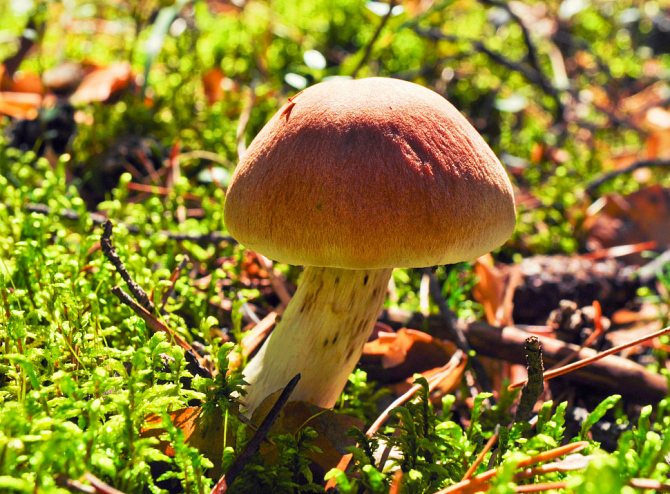
When the mushrooms are frozen, storage itself begins, during which they are also kept in the cold, although the temperature is -18 ° C with a relative humidity of 90-95%. For freezing and storage, metal containers are ideal - for example, tin boxes or boxes, the use of plastic bags is also permissible. At the same time, mushrooms should be stored separately from other products that can transfer an extraneous smell to them and thereby violate the taste. For preparation, such a blank is defrosted immediately before use - the required amount of mushrooms is placed at a temperature of 20 ° C and kept so for about 2 hours. This method is suitable for both fresh and fried mushrooms, but the last case is the least effective - the shelf life will not exceed six months.
Dry salting of porcini mushrooms
Before using the dry salting method, the mushrooms should be cleaned of debris. If there is too much of it, then it is better to rinse them with boiling water. Then it should be cooled and dried.
Of the ingredients, only the mushrooms themselves and coarse rock salt are needed. You can start salting:
- Fresh peeled mushrooms should be sorted by size, large ones cut into several pieces.
- You can salt the mushrooms in a large container or in jars; first, salt is poured into them, evenly covering the bottom with it.
- Then you can put the product in dense layers 3-4 centimeters thick, alternating each mushroom layer with salt.
- Salted mushrooms should be covered with a wooden board or flat plate and oppression should be placed on top (a regular jar of water will do). When the mushrooms settle down, you can add new ones.
- For the first few days, the workpiece should be in a room with room temperature. Then it must be placed in a cool, dry and dark place.
- The brine must be checked periodically, it should not be small.
- Thus, the boletus will be ready to eat in 30-40 days.
Before serving, porcini mushrooms should be soaked for an hour in cold water and rinsed well.
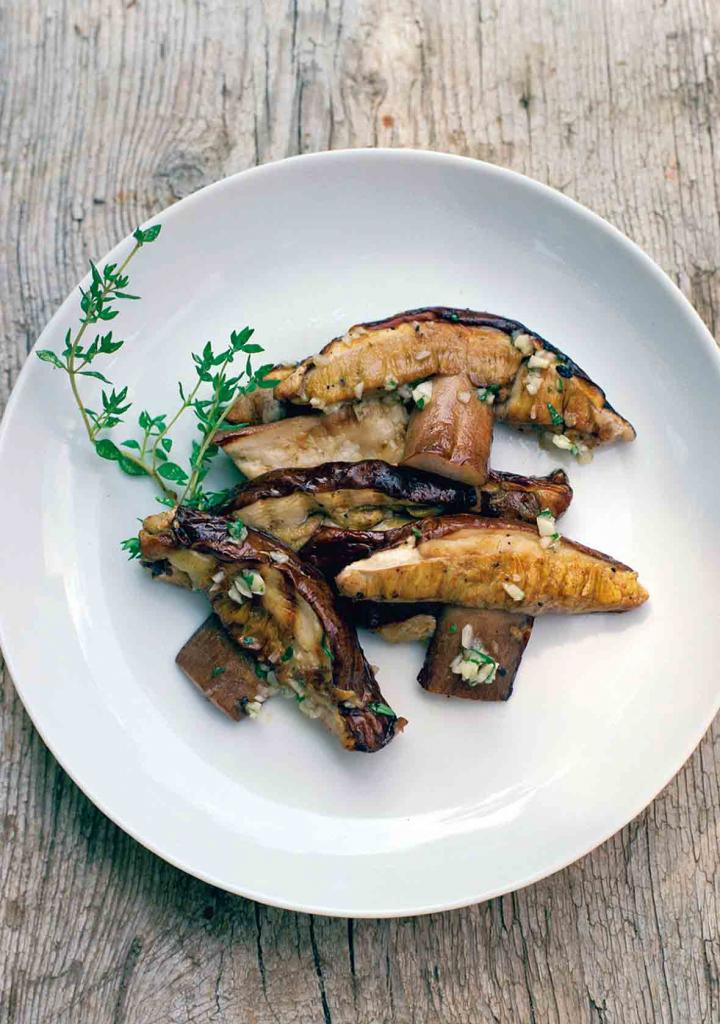
Freezing is a great way to store mushrooms
How long can mushrooms be stored in the freezer? Mushrooms are stored frozen for 10-12 months.
Mushrooms prepared for freezing are placed either in a special freezing bag with a slider, or in a plastic container. It is better to choose small containers, since thawed mushrooms will need to be used at a time - it is not recommended to re-freeze them.
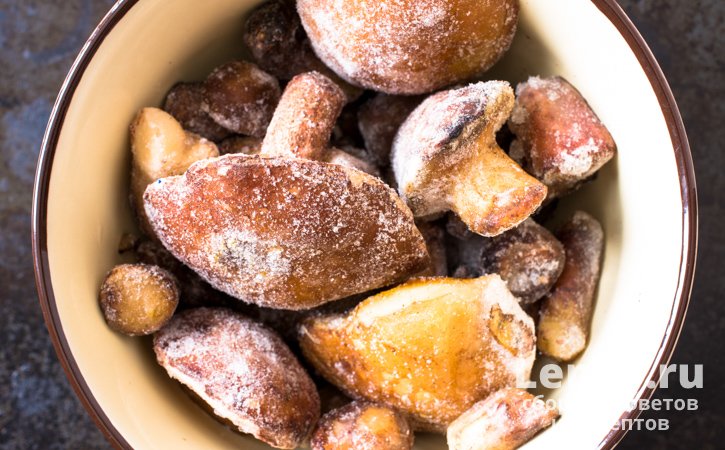 Don't be afraid to freeze mushrooms - this is a great way to preserve them for a long time.
Don't be afraid to freeze mushrooms - this is a great way to preserve them for a long time.
To remove harmful substances, microorganisms and at the same time preserve the beneficial properties of mushrooms, they are heat treated before freezing.
This is especially important for mushrooms such as milk mushrooms, russula, stitches, morels, volushkas, bitters, moths, milkweed and others that are classified as conditionally edible (containing poisonous substances that are washed out only during heat treatment)
Preliminary heat treatment is not necessary for porcini mushrooms, champignons, russula, aspen mushrooms, boletus mushrooms, chanterelles. If you prefer to process all mushrooms, their decoctions can also be frozen.
Before placing in the freezer, the mushrooms must be dried so that excess moisture does not damage the structure during freezing.
It is desirable that the mushrooms or mushroom fragments be of about the same size: if the cap or stem of the mushroom is too large, then it is cut into pieces.
It is not necessary to defrost the mushrooms beforehand; they will melt quickly in a skillet or pot as soon as you start cooking them.
How long can frozen mushrooms be stored in the freezer, if they were previously cooked (boiled or fried) - no more than 6 months in a tightly closed container or jar.
There is another option for storing fried mushrooms. After frying in vegetable oil, they are laid out in glass jars along with oil, the jars are closed with nylon lids. Such preservation is stored in the refrigerator for 6 months. An open can should be consumed within 7-10 days.
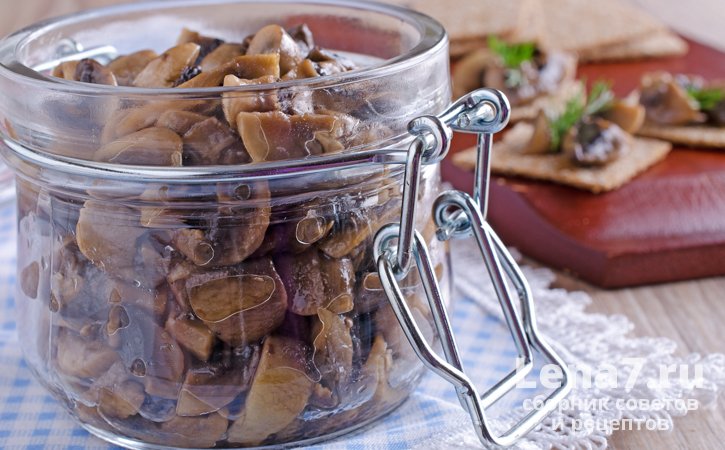 Storage option: mushrooms fried in oil in a glass container
Storage option: mushrooms fried in oil in a glass container
Methods for harvesting and processing mushrooms
Primary processing of mushrooms consists of several stages. First, they need to be cleaned of debris, cut off the legs or places damaged by insects. To prevent the mushrooms from turning black, it is better to use stainless steel knives.
The main methods of processing mushrooms are drying, pickling, salting and canning. They are based on creating conditions under which microbes cannot develop, and products retain their nutritional and taste qualities.
Cleaning and mushroom processing not the most exciting, but necessary activity: it is heating that destructively affects microbes. But after finishing this stage, the harvesting and processing of mushrooms will seem to you not so laborious.
Some microbes bend around at 60 ° C, others at 60-100 ° C. However, there are bacteria that remain viable even at temperatures above 100 ° C. Later, under normal temperature conditions, they begin to develop and multiply. Canning is impossible without the use of acetic or citric acid, since both suppress the vital activity of microbes. True, yeast and mold reproduce well in an acidic environment. Their appearance is inevitable when fermenting and salting foods. But this mold does not harm humans, it can be simply washed or collected.
Pathogens of botulism are especially dangerous in canned food. They live only in an airless space, and, as you know, there is no oxygen in cans. In such conditions, toxins (poison) are produced, which cause severe poisoning, fraught with death. The victim must be urgently taken to the hospital. As a first aid, you can rinse the stomach with a 5% solution of baking soda, give a laxative, put an enema. Canned food poisoned by botulism toxin is no different from benign ones, so try not to buy salted or pickled mushrooms on the market. Since the botulinus bacterium lives in the soil, the harvested mushrooms must be thoroughly washed, cleaned and not to use stale and damaged fruit bodies. Only in this case you can be sure that all mushrooms are edible, carefully processed, salted or pickled in compliance with preventive measures, stored in proper conditions and with systematic care (removing mold, if necessary, digesting marinades, etc.).
Mushroom poisoning is considered one of the most dangerous food poisoning and can lead to the death of the victim, so do not take unknown and dubious mushrooms - they can be dangerous.At the first sign of poisoning (headache, stomach pain, nausea, turning into uncontrolled vomiting), immediately call a doctor or ambulance. In such cases, the preservation of health and life often depends on how quickly the patient receives medical attention. It is most effective in the first 24 hours after eating poisonous mushrooms.
How to keep mushrooms for the winter
The warm summer is over! And a generous, economic autumn comes to visit us. She is ready to present everyone with a generous harvest of various mushrooms and berries.
Collect - collected, checked for edibility, and now it is important how to preserve mushrooms for the winter in order to pamper yourself and loved ones with various goodies in winter
When collecting mushrooms for the purpose of their subsequent storage, it is important to take into account their age and quality. Wormy, old, dried mushrooms should not even end up in the mushroom picker's wallet. The most popular mushroom is naturally white
Although friendly boletus, and mushrooms, and honey agarics, and many others are able to please with their taste. Therefore, you should not turn away from such a miracle!
How to dry mushrooms
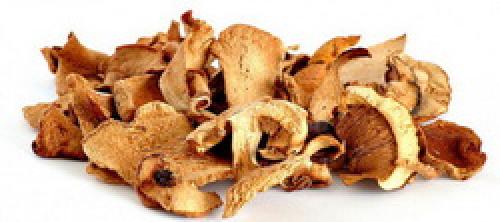
Drying is one of the common ways to preserve mushrooms for the winter. And it is the porcini mushroom that is honored, honored and respected here. When dried, it is incomparable, and even the most sophisticated gourmet will love the soup made from dried porcini mushrooms.
You can regale guests with such a dish - they will not refuse, and the household will always like such a delicacy.
It is important to remember that boletus should not be mixed with other varieties of mushrooms, then the mushroom broth will turn out to be light. Before drying, the mushrooms must be thoroughly cleaned of the slightest dirt and rinsed under running water.
It is not worth soaking the mushrooms in water, they will quickly become saturated with moisture, which threatens with long drying and possible rotting. Pure mushrooms must be cut into thin slices
Before drying, the mushrooms must be thoroughly cleaned of the slightest dirt and rinsed under running water. It is not worth soaking the mushrooms in water, they will quickly become saturated with moisture, which threatens with long drying and possible rotting. Clean mushrooms must be cut into thin slices.
Drying methods for mushrooms
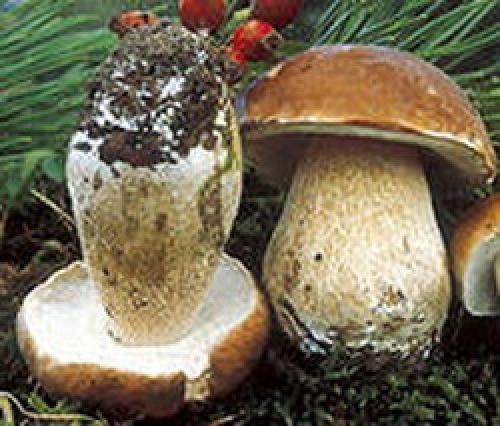
- It is great when the farm has a special electric dryer for vegetables and fruits. This will significantly speed up the process, since the mushrooms dry out perfectly there.
- If the electric dryer is not started in everyday life, you will have to save the mushrooms for the winter using the old tried and tested methods. In the oven, on the balcony, near the radiator or in the Russian stove, whoever has it on the farm.
- If preference is given to a stove or oven, then they should be barely warm, otherwise the product runs the risk of completely burning out. Mushrooms spread out on a baking sheet in a thin layer must be constantly stirred and turned over.
- You can follow the path of our grandmothers and string mushrooms on a strong thread, hanging them to dry in well-ventilated and warm places.
The finished product (dried mushrooms) can be stored in clean canvas bags. The product must breathe, otherwise it will simply go bad.
How to freeze mushrooms in the winter
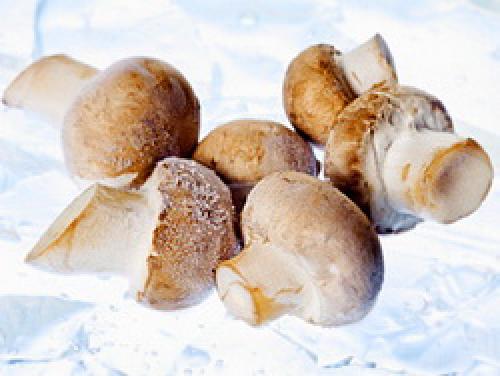
Mushrooms can be frozen for the winter. To do this, it is enough to be the happy owner of a fairly spacious freezer.
Thoroughly washed mushrooms must be cut and distributed in portions into packages - freeze.
The mushrooms should therefore retain their excellent quality for quite some time. After defrosting, the mushrooms will be just as tasty and aromatic as their fresh counterparts. Do not freeze mushrooms once thawed again.
There are housewives who, before freezing, prefer to pre-boil mushrooms until they are half-cooked. The only plus of this method of saving mushrooms for the winter is less space in the freezer. With a large harvest, this advantage is very significant.
Pickled mushrooms for the winter
You can save mushrooms for the winter as pickled.It is noteworthy that almost all types of edible mushrooms are suitable for the marinade. Strong pickled beauties just look incomparable on the table!
For the marinade, you should choose small mushrooms. This is not only more beautiful, but also tastier. Also, do not marinate several species in one heap, it is advisable to first sort them out by grade.
Many housewives like to prepare pre-fried mushrooms for the winter. The method for keeping mushrooms fried for the winter is incredibly simple. It is enough to fry the mushrooms, pour boiling oil and into a jar.
ON A NOTE! Mushrooms can now be grown at home. Read about it here.
How to preserve mushrooms for the winter?
Porcini mushrooms are most often pickled. As such, they become a wonderful base for salads, appetizers or canapés. The just collected boletus needs to be sorted out. Small young mushrooms are usually selected for pickling. Sometimes only hats. The canning itself takes place in several stages.

Dangerous doubles of the porcini mushroom.
The first step is preparatory. Mushrooms must be cleaned of impurities and rinsed in cold running water (several times).
Step two is cooking. The ingredients are placed in an enamel bowl and everything is poured with water with the addition of vinegar and salt. 1 kg of the crop takes a third of a glass of water, 15 g of salt and 85 ml of 8% vinegar
During the cooking process, juice is released and the amount of liquid increases significantly, it is important to remember this when choosing dishes for pickling
As the mass boils, the fire is reduced
Foam must be removed regularly and mixed with extreme caution. After the foam stops forming, add sugar (a teaspoon) and spices (allspice, cinnamon, cloves, bay leaf and citric acid on the tip of a knife)
Cooking can be considered complete when the mushrooms sink to the bottom and the marinade becomes transparent.
Step three - capping. The dishes in which the ingredients were cooked are removed from the heat and cooled, and only after that the finished products are placed in jars. On top of the mushrooms, it is good to add a sprig of oregano and a little sunflower oil (to prevent mold). Banks should be closed leaks.
How to store porcini mushrooms. Organization of storage
When all preparations are complete, proceed with choosing a storage location. It must be dry and well ventilated.
Usually, dried mushrooms strung on a string are hung in the pantry, where there are no extraneous odors. It is recommended to wrap the dryer in a natural cloth and hang it on a nail or on a hanger.
Do not store mushrooms next to onions, smoked meats and other strong-smelling foods.
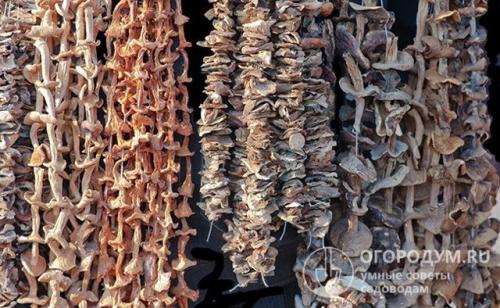 If there is a suitable room, the mushrooms can be stored by hanging from a rope.
If there is a suitable room, the mushrooms can be stored by hanging from a rope.
For storage, an attic, a place above a stove in a country house, or the top shelf of a kitchen cabinet in an apartment are perfect. If you have not yet decided what is the best way to store mushrooms, read the reviews of experienced housewives on specialized forums. Also, do not forget about the following points:
- Cover the mushrooms with a thick, breathable cloth to keep out dust and flies;
- choose linen bags, paper bags or hermetically sealed glass jars for storing mushroom drying;
- use wooden boxes lined with paper if you need to store a lot of dried mushrooms;
- use vacuum food trays for storage if possible.
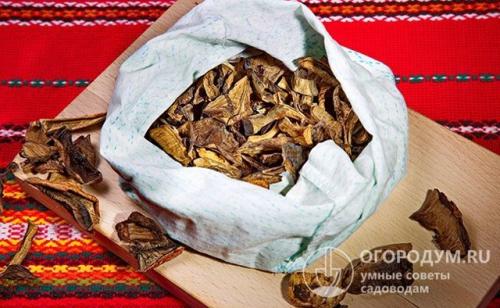 Storing dried mushrooms in bags made of natural fabric is a time-tested method. Make sure that there is not the slightest hint of dampness in the storage area of the mushrooms, otherwise the product will quickly lose its quality.
Storing dried mushrooms in bags made of natural fabric is a time-tested method. Make sure that there is not the slightest hint of dampness in the storage area of the mushrooms, otherwise the product will quickly lose its quality.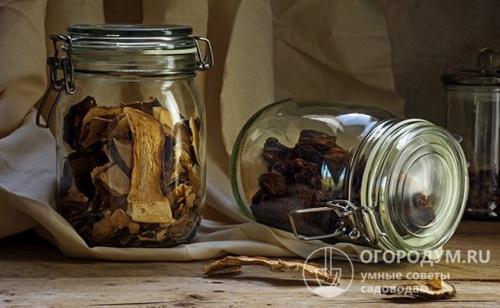 It is convenient to store dried mushrooms in glass jars.
It is convenient to store dried mushrooms in glass jars.
How else can you store drying at home? In order not to spoil, some housewives prefer to place the product in the refrigerator.
In this case, pests are not afraid of fungi, but high humidity can be dangerous for them.
Place the dryer in an airtight container, such as a plastic container or glass jar, with the lid tightly closed. This will help prevent mold growth.
At the height of the mushroom season, fans of a quiet hunt have a question about how to store dried porcini mushrooms at home, because this noble mushroom gives a crop not every year.
For long-term storage, they can be rolled up in cans under metal lids, as usual. In this case, the likelihood of product mold formation is reduced to zero.
To make the workpiece correctly, follow the following sequence of steps:
- Immediately after drying, the still not cooled mushrooms are placed in clean sterilized jars with a capacity of 0.5-1 liters.
- Drop a little alcohol on the inside of the lid.
- Set fire to alcohol (this is done in order to remove oxygen in the jar).
- Quickly cover the jar with a lid and roll up with a key.
Dark glass jars are best suited for storing the workpiece.
Housewives often have a question: how long are dried mushrooms stored? If you dry them correctly and keep them protected from moisture, they will delight you with their unique taste for 2-3 years. We hope our recommendations will allow you to provide yourself with mushroom stocks without unnecessary difficulties.
Choice of dishes
For storing mushrooms, it is better to take a glass or metal container with enameled walls. To prevent them from drying out, they need to be covered. You cannot plug the lid - the product must breathe. Cotton or paper is ideal. If you need to store fresh mushrooms for a day, you can put them in an airtight container.
Some people prefer to use kraft bags. They are made of durable paper that does not get wet and at the same time allows air to pass through. Bags made of natural fabric (cotton or linen) have a similar property. They create the natural aeration required by the mushrooms. But such packaging does not protect against moisture. To improve the quality of these bags, they must be placed in a strong saline solution for several hours. Then they need to be pulled out and hung up so that the fabric dries well. The salt will not only draw out moisture, but also protect against pests.
It is not recommended to store mushrooms in aluminum containers. It will provoke early oxidation, which will lead to product spoilage. In addition, even aluminum instruments (spoons, scoops, tongs, etc.) should not be left in a container with mushrooms.
It is also worth refusing to use plastic bags. Due to the temperature difference, condensation forms in them, which is a favorable soil for the appearance of mold. If, apart from polyethylene, there is nothing else, then you will have to periodically ventilate the product to prevent moisture accumulation.
Of course, any dishes with mushrooms must be sent to a cool place.
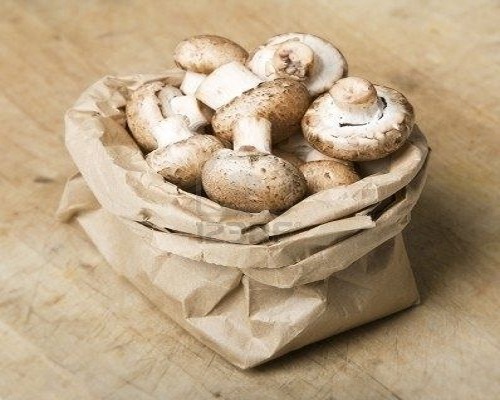
Features of storing store mushrooms
If mushrooms are purchased in their original packaging, then you should focus on the terms that are indicated on the container itself. Ideally, this should be a vacuum bag, then the product is guaranteed not to deteriorate within a month, as the manufacturer claims. It is recommended to leave the product in the same packaging. But it is better to play it safe and store mushrooms for no more than 3-5 days.
Trays simply covered with plastic can usually be stored for up to one week. But in fact, the decomposition process under polyethylene begins much earlier. In this case, it will not be possible to keep the mushrooms fresh for more than 2-3 days. Therefore, it is better to transfer them to another dish. Which one - will be told a little later.
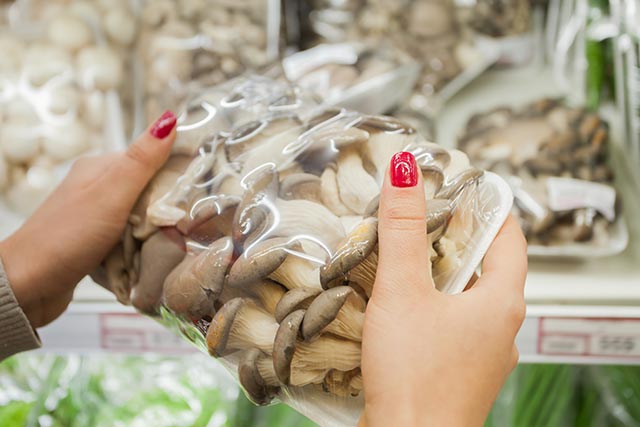
Usually store mushrooms are clean, but before cooking, they should be rinsed with running water, dried on a paper towel and any yellowed parts removed. You need to use the product immediately, maximum - within two to three hours.
How to store thermally processed mushrooms
Heat treated, boiled or boiled, as well as fried fruit bodies can be stored much longer than fresh ones. Boiled mushrooms are very easy to cook:
- thoroughly clean and rinse in cold running water;
- cut large specimens into several parts;
- blanch in boiling water for a couple of minutes;
- drain the broth and cool in cold clean water;
- dry, then pack in clean and dry containers for freezing;
- freeze in a freezer at a temperature of -18 ° C.
Subject to these conditions of preparation and storage, fungi perfectly retain both their appearance and all food and taste qualities for several months. You can also freeze mushrooms boiled for 20 minutes or until tender. In this case, the shelf life in the freezer is about six months. Fried and stewed fruit bodies can be stored in a freezer in the refrigerator for no longer than three months.
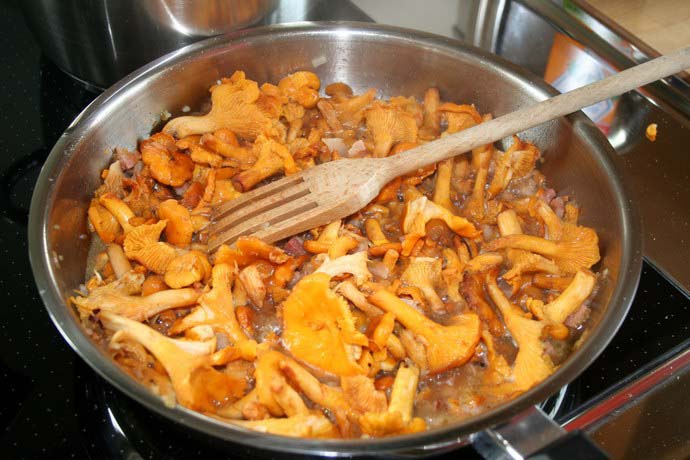
How to save mushrooms on a hike. How to dry mushrooms in field conditions?
When going on a multi-day hike, it is very difficult to comply with the weight parameters of a backpack, because in addition to various equipment, you also have to carry food supplies. But seasoned hikers always find ways to get around difficulties, after all, can they get used to difficulties! Summer time, the forest is full of food. A fairly high-calorie meal can be ordinary forest mushrooms, of which there will be a great many along the route.
However, fresh mushrooms are one thing: narwhal, cooked and ate. But this is just for one time ... And you can stock up on mushrooms for future use, if you know how to properly prepare mushrooms for drying and dry them in the field. Mushrooms are a valuable product, and in dried form they are also lightweight, so they can be stocked up for more than one day's journey.
For drying, such types of mushrooms as early mushrooms, boletus mushrooms, mushrooms, aspen mushrooms, boletus mushrooms, white mushrooms are best suited. First of all, you need to collect the mushrooms, usually it is not difficult. All these types of mushrooms, as a rule, are known to all mushroom pickers and tourists, so it is unlikely that it will be possible to pick up a poisonous mushroom. The only exception can be honey mushrooms, but in any case, you should not cut the mushroom if you doubt its edibility. For cooking, you can take any mushrooms, but for drying, preference is given to young mushrooms.
We spread the collected trophies and begin to prepare them for drying. To do this, we cut off the stem of the mushroom from the cap, clean the cap itself of needles, adhered leaves and blades of grass, earth and sand. With a knife, carefully cut out all the damage caused to the cap by various insects or small rodents. Cut the mushroom caps into small pieces with the same knife. On this, in fact, the main stage of preparation is over.
It is better to dry mushrooms not immediately, but after preliminary drying: spread the prepared pieces of hats on a newspaper, a cloth bedding, or, in extreme cases, just on stones in the sun. Lay out so that the pieces do not touch each other, so they will give off moisture faster. After some time (measured by eye), when the mushrooms give off about half of the moisture and noticeably tighten, they can begin to be strung on a thread. For this procedure, any needle and any thread up to one meter long will do. You need to string it slowly, and, again, keeping a small distance between the stringed pieces.
You can finally dry the mushrooms by hanging ready-made cuts near the tents or between the branches of trees and bushes. When drying, it is advisable to wrap the garlands with gauze so that the flies cannot lay eggs in them. The mushrooms will dry perfectly in just one sunny day. Sometimes tourists resort to an accelerated option for drying mushrooms using a fire. Honestly, I would not recommend doing this, since the mushrooms smell like smoke, and you can not keep track of the situation: the mushrooms will burn instead of drying out.Before preparing dried mushrooms for further transportation, inspect them carefully. There should be no underdried pieces! Otherwise, because of a couple of damp mushrooms, all your work will go down the drain, that is, you will get a bag of incomprehensible porridge from your backpack, which also smells unpleasant.
At a halt with an overnight stay, such a drying method as a fire burned out on the stones is also used. The preparatory phase is exactly the same as described above. But the final one is done like this. A hole is dug about half a meter deep, its bottom is covered with an even layer of cobblestone or suitable stones. A bonfire is made on the stones, which can be used for heating or preparing dinner. After the fire burns out, its remains are removed from the pit, and a layer of hazel or alder branches, for example, is applied to the stones. The dried pieces of mushrooms are strung on twigs. As in the first case, the pieces should not touch each other. The twigs are laid over the prepared hole, resting on its edges. Then the whole structure is again covered with branches of the same trees; it is advisable to put a newspaper or thicker paper on top of them. Then all this is sprinkled with earth and left in this form until morning.
When placing the mushroom twigs over the hole, you may need a mitten, as the temperature in the hole from the hot stones will still be significant. When you wake up in the morning, you will receive a well-dried batch of mushrooms. Put them in a cloth bag and you can go further along the route. On the way back, you can make some supplies of dried mushrooms for the house.
That, perhaps, is the whole simple science of drying mushrooms in the field. Good luck to everyone on the hikes!
Hot and cold ways to pickle mushrooms
For this method of storing mushrooms, lamellar mushrooms are most often taken, even with a bitter taste: valui, milk mushrooms, mushrooms, volnushki, ryadovki, talkers, russula. They are usually salted in wooden barrels, enameled and glass containers. When pickling and pickling mushrooms, dishes must be clean and free of any foreign odors. Mushrooms should not be salted in earthenware and galvanized tin dishes, as the coating can come into contact with the brine and poison the mushrooms.
There are hot and cold methods for pickling mushrooms. The difference between the cold method is that the mushrooms are not boiled before salting. They are cleaned and washed, and mushrooms with a pungent taste, such as milk mushrooms or valui, are soaked in salted water for one to three days.
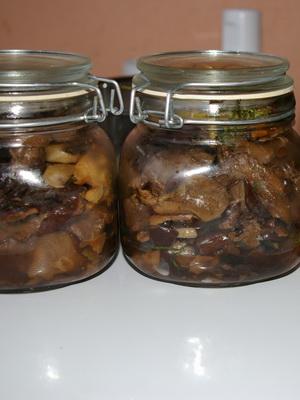
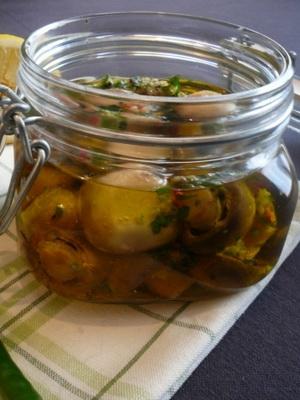
With the cold method of salting mushrooms, salt must be poured onto the bottom of the container, then a layer of mushrooms (6-8 cm), again salt, again a layer of mushrooms, and so on until the dishes are filled. 1 kg of mushrooms usually takes 40-60 g of salt. High quality mushrooms are most often salted without any additives in order to preserve their special taste and aroma. But you can add garlic, pepper, dill, bay leaves, cherry or black currant leaves. Salted mushrooms are pressed from above with a special wooden circle, on which oppression is placed. Under it, the mushrooms settle and let the juice in after a couple of days. Under no circumstances should you use lime stones, bricks or metal objects for oppression.

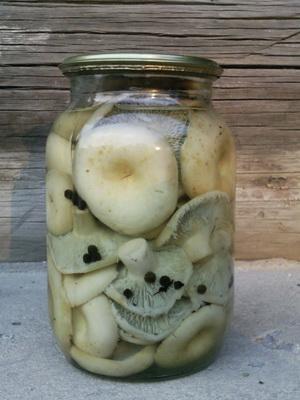
The hot method of salting is suitable for mushrooms with a bitter taste: milky, volush, value and all types of mushrooms. The washed and peeled mushrooms are boiled in lightly salted water for about 30 minutes or blanched for 5-15 minutes, then they are thrown back in a colander and allowed to dry. Next, the container is filled with mushrooms in the same way as in the cold method. Hot salted mushrooms can be eaten in a couple of weeks.
Fragrant spices and herbs will help emphasize the taste and smell of harvested mushrooms.
Storing untreated mushrooms
Not always and not every mushroom picker has the opportunity to pre-prepare mushrooms for storage, so it will not be superfluous to learn about how fresh mushrooms, just picked and not subjected to any processing, are stored correctly. The best option in this situation is to place the product in constant cold (the temperature should be between 0 ° C and 5 ° C). Before this, the mushrooms are placed in a clean glass or plastic container without traces of liquid.Metal containers will not work - most metals used in production have a negative effect on food of this kind and are not suitable for storage. Also, do not close the containers - this will provide the necessary air ventilation.
Thus, the choice of a method for storing mushrooms depends, first of all, on what varieties you are going to harvest and for how long you expect. Without preliminary processing, it is unlikely that it will be possible to keep them in an appropriate state for a long time, but if necessary, you can use this method as well. Also, do not forget that the key points in storing mushrooms are not only maintaining the correct environmental conditions, but also choosing the appropriate utensils, since not every container is suitable for this product. Observing these simple rules, you can easily prepare mushrooms for many months in advance and will please your guests more than once with memorable dishes prepared from stored delicacies.
Methods for storing mushrooms for the winter. Proper and long-term storage in the freezer
To increase the shelf life, the product is frozen. Untreated mushrooms are stored for 3-4 months, processed (boiled, fried) - 6 months at a temperature of -18 ° C. For freezing, whole, undamaged mushrooms are selected without darkened areas, traces of rot. They are cleaned of dirt, cut or left intact, frozen.
To defrost the product, it is taken out of the freezer and placed in the refrigerator. When it thaws, move it to room temperature. So the mushrooms will retain the maximum amount of nutrients, will not darken or swell from moisture, and will reveal their taste and aroma.
When preparing a hot dish, they are immediately sent to the stove, without waiting for defrosting.
Boiled champignons
Boiled mushrooms are stored in the freezer for up to six months. The mushrooms prepared for processing are cleaned, washed under running water, and cut. The water is slightly salted and brought to a boil. The chopped product is lowered, boiled for 10 minutes. Throw in a colander to glass water.
Then the boiled mushrooms are spread on paper towels to dry completely. Lay out in containers or plastic bags in portions, freeze. The container must be marked with the date of freezing in order to monitor the expiration date of the product.
Advice. Champignons do not re-freeze, so place them in the freezer in single portions.
Fried mushrooms
To freeze the fried product, it is peeled and washed. Cut, put in a frying pan, add a little vegetable oil. Fry until the liquid boils away. Then spread on paper towels to cool and absorb excess fat. After that, they are laid out in portions in packages, they are marked with the date of freezing and stored in the freezer.
Mushrooms are not only fried in a pan, but also baked in the oven. They are cleaned, washed, cut if desired. Dry on a paper towel and spread on a baking sheet lined with parchment paper. Bake for 15 minutes at a temperature from +160 to + 180 ° C. After cooling, they are laid out in bags or containers, frozen.
Keeping forest resources in an apartment
Residents of cities in the summer like to go to the forest for mushrooms. But in the conditions of the city, storing blanks is very problematic due to the lack of free space and the lack of suitable climatic conditions. But what if the trip turned out to be very successful and you want to keep a tasty and aromatic product for future use?
The solution is often a pantry - a dark, dry, ventilated room found in many apartments. If there is no ventilation window, you will need to periodically ventilate the room. In the pantry, you can place boxes made of cardboard and wood, mushroom "garlands" strung on a string, containers with blanks.Do not forget that the "weather" in the apartment is still not the most suitable for drying storage and responsibly check the supplies at least a couple of times a month.
Unfortunately, not every city apartment is equipped with a storage room. But this is not a reason to get upset and give up the idea of stocking up on dried mushrooms. It remains to contrive and use what is - it can be mezzanines, upper shelves of cabinets.
Of course, a variety of containers will come to the rescue:
- vacuum bags and containers;
- glass jars, tightly closed with lids;
- paper and fabric bags;
- plastic and ceramic containers.
Banks also do not allow bugs to profit from their contents, but oxygen remains inside, which promises other problems.
However, there is a life hack to remove oxygen! Pour a little alcohol into a metal lid, set it on fire and immediately seal the container. During the reaction, oxygen burns out and the necessary vacuum is created! As a result, there is no excess moisture, decay and conditions for mold colonies. Mushrooms harvested in this way will remain in a cool, dry place for several years. Make sure there really is no oxygen left in the jar! If the sealing turned out to be of poor quality, then after a while the use of the contents of the can in food can be life-threatening or threaten with serious poisoning.
Banks and lids must be sterilized and dried before use.
Bags made of any material are inferior to the above-described containers in tightness. But on the other hand, they are environmentally friendly, do not take up much space in the apartment and allow the contents to "breathe". Before use, fabric bags must be boiled in a strong saline solution, dried well and properly ironed. Beetles will never get into a bag containing hot peppers.
As mentioned above - vacuum bags and containers are ideal for this purpose. They are non-toxic and made specifically for products. The design allows oxygen to be removed, preventing rotting and the development of mold. And the tightness does not allow unwanted "guests" to penetrate the tasty workpieces. However, for a really long time, the contents can only be stored in containers, the air from which is pumped out by a pump. Each time, removing a portion of dried mushrooms, it will be necessary to pump out the air again. A significant disadvantage is the high cost of packaging.

